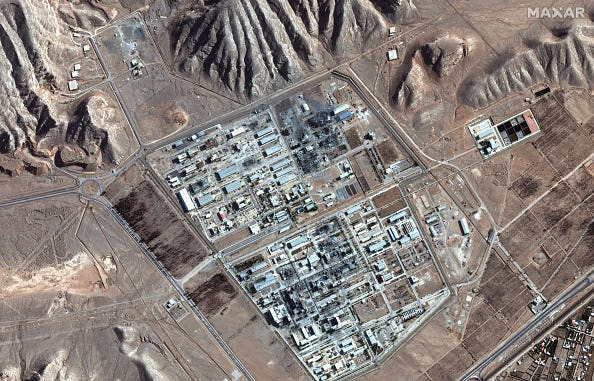Alberta
Alberta looking to ban electronic vote tabulators ahead of next provincial election

From LifeSiteNews
electronic voting tabulators, which were supposed to speed up vote counting, instead saw election results delayed due with workers having to manually enter the results that each tabulator printed out.
The conservative Premier of Alberta, Danielle Smith, has confirmed she is looking to ban the use of electronic vote tabulators in future provincial elections after issues with them in the 2023 election saw massive delays in the tallying of votes.
Smith, according to a report from True North, while speaking to a United Conservative Party (UCP) fundraiser on January 26 in the community of Bonnyville was asked if she would “end the use of voting tabulators across the province?”
Smith replied with a firm “yes.”
The 2023 Alberta provincial elections held in May saw Smith and her UCP win a majority, although a slim one, over the left-wing Alberta New Democratic Party (NDP).
Elections Alberta used what is called a Vote Anywhere Service, which allowed anyone to vote at any voting place regardless of which riding (jurisdiction) they were actually voting in. While paper ballots were used for the election, electronic tabulators were used to count the votes from all hand ballots. A form was then printed out with the result of each riding from the tabulators count of the hand ballots.
However, the electronic voting tabulators, which were supposed to speed up vote counting, instead saw election results delayed due with workers having to manually enter the results that each tabulator printed out.
Elections Alberta noted in June 2023, per True North, that “[w]e did not use any electronic data transfer from the tabulators, as the tabulators used for advance voting were never connected to a network at any time.”
“As a result, it was a manual process to verify and enter these results.”
Many in the UCP have long called for the return of hand counting, as is done in Canada’s federal elections.
As for Smith, before the 2023 election, she noted that she was confident in Elections Alberta’s plan to use electronic tabulators, as “we have the ability to do a hand count as a follow up in the event there are close results, I believe that’s going to be sufficient.”
“That’s, I think, something that people expect in democracy – that you should be able to verify a vote if results end up very close,” she added.
Elections Alberta, however, has pushed back on returning to hand counting ballots, saying it would increase the manual workload of employees.
There were many close results on election night, with the NDP losing a few seats by only a handful of votes in some Calgary ridings.
Smith gave no timeline as to how or when she would make the change.
Many large municipalities in Alberta, including the province’s two biggest cities, Calgary and Edmonton, use electronic tabulators for ballot counting.
Issues surrounding electronic voting machines as well as tabulators came to a head in the aftermath of the 2020 U.S. presidential election, which saw Joe Biden declared the winner over Donald Trump.
A report published by LifeSiteNews last year documented how a computer programmer, Clinton Eugene Curtis, who had previously testified to Congress on the integrity of voting machines, warned lawmakers in Arizona to never trust them.
“Don’t use machines, because you can never, ever trust them to give you a fair election,” said Curtis.
“There are too many ways to hack them. You can hack them at the level that I did when you first build them, you can hack them from the outside, you can hack them with programs that load themselves on the side. It’s impossible to secure them. You will never beat the programmer. The programmer always owns the universe.”
Of note is that Curtis is a Democrat who had worked as a programmer for NASA, as well as the Department of Defense and other government agencies.
Agriculture
Lacombe meat processor scores $1.2 million dollar provincial tax credit to help expansion

Alberta’s government continues to attract investment and grow the provincial economy.
The province’s inviting and tax-friendly business environment, and abundant agricultural resources, make it one of North America’s best places to do business. In addition, the Agri-Processing Investment Tax Credit helps attract investment that will further diversify Alberta’s agriculture industry.
Beretta Farms is the most recent company to qualify for the tax credit by expanding its existing facility with the potential to significantly increase production capacity. It invested more than $10.9 million in the project that is expected to increase the plant’s processing capacity from 29,583 to 44,688 head of cattle per year. Eleven new employees were hired after the expansion and the company plans to hire ten more. Through the Agri-Processing Investment Tax Credit, Alberta’s government has issued Beretta Farms a tax credit of $1,228,735.
“The Agri-Processing Investment Tax Credit is building on Alberta’s existing competitive advantages for agri-food companies and the primary producers that supply them. This facility expansion will allow Beretta Farms to increase production capacity, which means more Alberta beef across the country, and around the world.”
“This expansion by Beretta Farms is great news for Lacombe and central Alberta. It not only supports local job creation and economic growth but also strengthens Alberta’s global reputation for producing high-quality meat products. I’m proud to see our government supporting agricultural innovation and investment right here in our community.”
The tax credit provides a 12 per cent non-refundable, non-transferable tax credit when businesses invest $10 million or more in a project to build or expand a value-added agri-processing facility in Alberta. The program is open to any food manufacturers and bio processors that add value to commodities like grains or meat or turn agricultural byproducts into new consumer or industrial goods.
Beretta Farms’ facility in Lacombe is a federally registered, European Union-approved harvesting and meat processing facility specializing in the slaughter, processing, packaging and distribution of Canadian and United States cattle and bison meat products to 87 countries worldwide.
“Our recent plant expansion project at our facility in Lacombe has allowed us to increase our processing capacities and add more job opportunities in the central Alberta area. With the support and recognition from the Government of Alberta’s tax credit program, we feel we are in a better position to continue our success and have the confidence to grow our meat brands into the future.”
Alberta’s agri-processing sector is the second-largest manufacturing industry in the province and meat processing plays an important role in the sector, generating millions in annual economic impact and creating thousands of jobs. Alberta continues to be an attractive place for agricultural investment due to its agricultural resources, one of the lowest tax rates in North America, a business-friendly environment and a robust transportation network to connect with international markets.
Quick facts
- Since 2023, there are 16 applicants to the Agri-Processing Investment Tax Credit for projects worth about $1.6 billion total in new investment in Alberta’s agri-processing sector.
- To date, 13 projects have received conditional approval under the program.
- Each applicant must submit progress reports, then apply for a tax credit certificate when the project is complete.
- Beretta Farms has expanded the Lacombe facility by 10,000 square feet to include new warehousing, cooler space and an office building.
- This project has the potential to increase production capacity by 50 per cent, thereby facilitating entry into more European markets.
Related information
Alberta
Alberta Next: Alberta Pension Plan

From Premier Danielle Smith and Alberta.ca/Next
Let’s talk about an Alberta Pension Plan for a minute.
With our young Alberta workforce paying billions more into the CPP each year than our seniors get back in benefits, it’s time to ask whether we stay with the status quo or create our own Alberta Pension Plan that would guarantee as good or better benefits for seniors and lower premiums for workers.
I want to hear your perspective on this idea and please check out the video. Get the facts. Join the conversation.
Visit Alberta.ca/next
-

 Energy1 day ago
Energy1 day agoB.C. Residents File Competition Bureau Complaint Against David Suzuki Foundation for Use of False Imagery in Anti-Energy Campaigns
-

 Alberta2 days ago
Alberta2 days agoAlberta uncorks new rules for liquor and cannabis
-

 COVID-191 day ago
COVID-191 day agoCourt compels RCMP and TD Bank to hand over records related to freezing of peaceful protestor’s bank accounts
-

 Crime2 days ago
Crime2 days agoProject Sleeping Giant: Inside the Chinese Mercantile Machine Linking Beijing’s Underground Banks and the Sinaloa Cartel
-

 C2C Journal1 day ago
C2C Journal1 day agoCanada Desperately Needs a Baby Bump
-

 International1 day ago
International1 day agoTrump transportation secretary tells governors to remove ‘rainbow crosswalks’
-

 Alberta1 day ago
Alberta1 day agoAlberta Next: Alberta Pension Plan
-

 conflict16 hours ago
conflict16 hours agoUS airstrike on Iran’s nuclear facilities. Was it obliteration?



